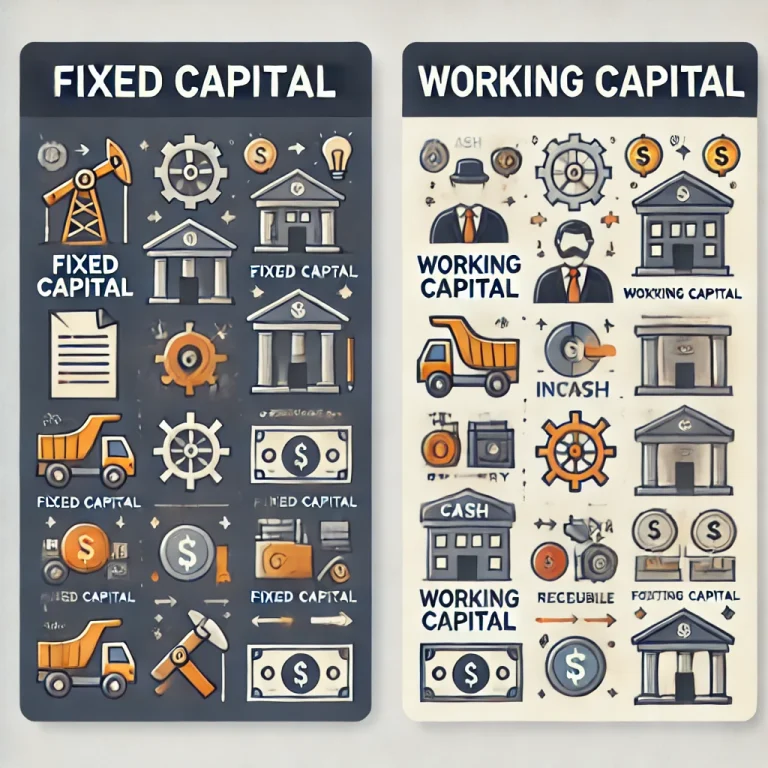Fixed capital and working capital are essential components of a business’s financial structure, each serving unique functions that support long-term growth and day-to-day operations. The difference between fixed capital and working capital primarily lies in their usage, with fixed capital referring to long-term investments in assets and working capital supporting operational expenses. Understanding their distinctions helps businesses optimize cash flow and ensure a stable foundation for sustainable growth.
What is Fixed Capital?
Fixed capital refers to the funds invested in long-term assets, which are not intended for resale but are used repeatedly in production or service delivery. This capital is crucial for acquiring fixed assets like machinery, buildings, and equipment, which form the foundation of the company’s operational capabilities.
How Fixed Capital Works
Fixed capital is allocated to acquire and maintain long-term assets, helping businesses maintain a consistent operational capacity. These assets provide benefits over several years, aiding in the production process without frequent replacement. For instance, a manufacturing firm’s investment in machinery represents fixed capital, as it supports production for multiple years.
- Nature: Fixed and immovable.
- Purpose: Used for acquiring and maintaining long-term assets.
- Liquidity: Generally illiquid; not easily converted into cash.
- Examples: Land, buildings, heavy machinery, and production equipment.
What is Working Capital?
Working capital refers to the funds needed to cover the day-to-day operational expenses of a business. It represents the difference between current assets (such as cash, inventory, and receivables) and current liabilities (like payables). Working capital is essential for a company’s short-term financial health, supporting activities like paying wages, buying raw materials, and covering utility expenses.
How Working Capital Works
Working capital is used to meet immediate financial obligations, ensuring that a business can continue its operations without interruption. For instance, a retail store uses working capital to restock inventory, pay its employees, and handle other short-term expenses. Adequate working capital allows businesses to respond to unforeseen expenses and sustain operations.
- Nature: Fluid and short-term.
- Purpose: Supports daily operational expenses.
- Liquidity: Highly liquid; easy to convert into cash.
- Examples: Cash, accounts receivable, inventory.
Key Differences Between Fixed Capital & Working Capital
Fixed and working capital serve distinct purposes but are interdependent, with each contributing to the overall financial health and stability of a business. While fixed capital ensures a business’s foundational capacity, working capital supports its ongoing activities.
| Aspect | Fixed Capital | Working Capital |
|---|---|---|
| Definition | Long-term investments in fixed assets | Short-term funds for daily operations |
| Purpose | Used to acquire permanent assets | Used to manage short-term liabilities |
| Liquidity | Low liquidity | High liquidity |
| Investment Horizon | Long-term | Short-term |
| Examples | Buildings, machinery, equipment | Cash, inventory, accounts receivable |
Fixed capital and working capital are two pillars of financial management, each critical to a business’s growth and stability. Fixed capital represents long-term investments that support the company’s strategic objectives while working capital ensures smooth daily operations. Together, they help maintain a balanced financial structure, contributing to profitability and operational efficiency.
Fixed Capital and Working Capital FAQs
What is the difference between fixed capital and working capital in terms of liquidity?
Fixed capital is less liquid as it involves long-term assets, whereas working capital is highly liquid, focusing on current assets that can be converted into cash quickly.
Can a company operate without fixed capital?
It’s unlikely, as fixed capital is needed to acquire essential assets, like machinery and buildings, necessary for production and operations.
Is working capital the same as cash flow?
No, working capital is the difference between current assets and liabilities, whereas cash flow refers to the actual inflow and outflow of cash in a business.
Why is working capital important for a business?
Working capital supports day-to-day expenses, enabling the business to meet immediate financial obligations and sustain uninterrupted operations.
How does fixed capital impact a business’s growth?
Fixed capital investments in assets like machinery and infrastructure create a strong operational foundation, enabling long-term expansion and stability.


